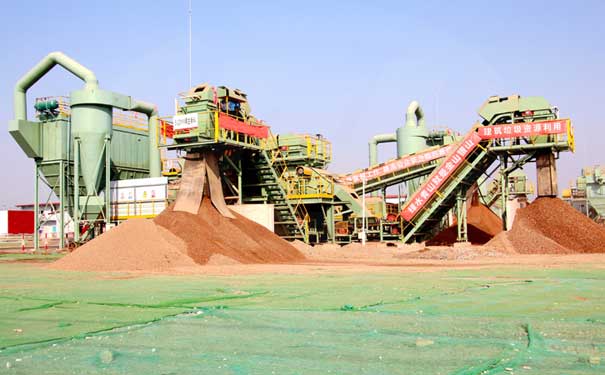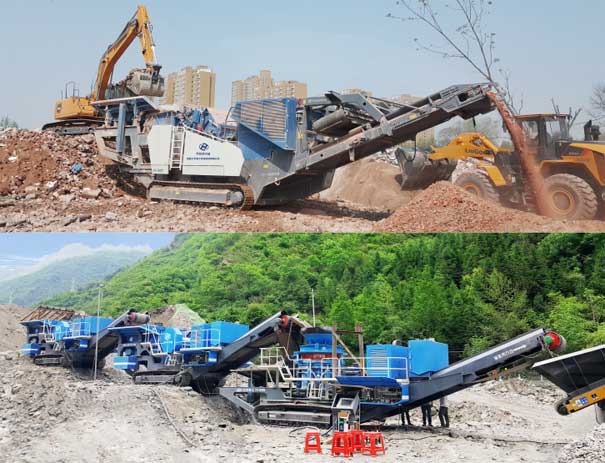At present, due to the rise of the construction waste recycling industry, the value of construction waste has attracted the attention of many businesses. At this stage, the main secondary recycling method is to crush these wastes on-site and process them into renewable resources. Concrete blocks are generally a kind of construction waste. After being broken, they can be turned into sand and gravel aggregates, which are used for road construction and houses. Concrete blocks are generally about 50cm in size, while small ones are about 5cm in size. Generally, fixed crushers or mobile crushers are used for crushing. If the customer requires flexibility and space is not limited, the mobile crusher is more appropriate; if the customer only requires low cost and no site requirements, then fixed crusher equipment is used.
Stationary crusher categories: jaw crusher, construction waste crusher, vibrating feeder, circular vibrating screen, impact crusher
Output: 100t/h
Finished products: 0-5mm, 5-10mm, 10-20mm, 20-31.5mm
Final products: recycled block bricks, permeable concrete, etc.
Equipment features: relatively low investment cost, large output, and large crushing ratio, suitable for fixed operating sites.
Production process: After pretreatment, the raw materials are sent into the large storage bin by forklift or hook machine. The vibrating screen feeder will separate gypsum, soil and small concrete blocks (less than 120mm) while ensuring uniform feeding to the crusher. Large materials (greater than 120mm) enter the jaw crusher for primary crushing, and fall into the vibrating feeder after buffer adjustment (the function of the vibrating feeder is to protect the belt from being scratched by the thicker steel bars), and then enter through the belt conveyor secondary crushing. The secondary crushing adopts a special crusher for construction waste. This equipment has the dual functions of screening and crushing, with high crushing efficiency, and the special cavity is not afraid of steel entanglement. The material is crushed into materials less than 50mm through the impact crusher, and most of the steel and concrete are separated, and then conveyed to the screening system (the screening system includes two parts: soil removal, screening and material classification) for processing.
Mobile crushing station category: tire mobile crushing station, crawler mobile crushing station
Output: 50-500t/h
Equipment features: intelligent control, flexible and convenient, high degree of automation, environmental protection and energy saving, suitable for scattered users on the work site, high investment cost. Both the fixed crusher and the mobile crusher can crush concrete blocks. To choose the quality of the crusher, it is necessary to comprehensively compare the advantages and disadvantages of the equipment. Whether it is fixed or mobile, it has its characteristics and advantages. If you want to do engineering and there are more sites, you can choose a mobile crushing station. Although the initial cost investment is more, the later return is faster. It is not restricted by the region. Multiple sites work back and forth, and the operating labor cost is also low. If you own a construction site and the production is relatively fixed, you can choose a fixed crusher, the overall cost is more appropriate.
For more information, you can click: www.lydhchina.com




